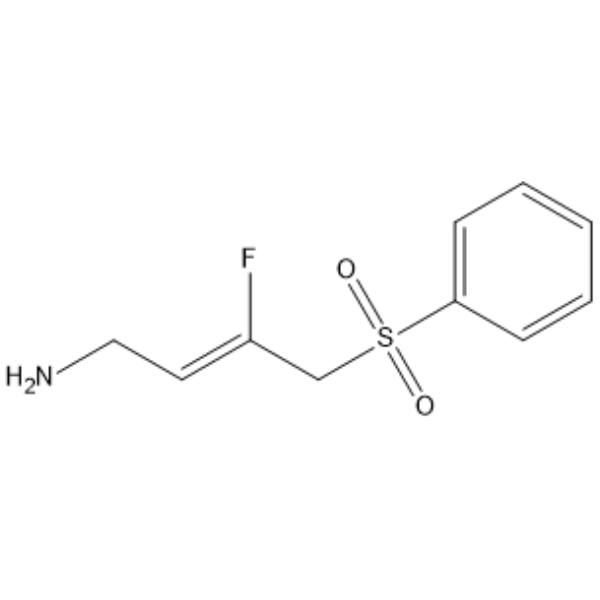| Description |
PXS-4787 is a specific and effective pan-LOX (lysyl oxidase) inhibitor for abolishing lysyl oxidase activity. PXS-4787 inhibits LOX with IC50s of 2 μM (Bovine LOX), 3.2 μM (rh LOXL1), 0.6 μM (rh LOXL2), 1.4 μM (rh LOXL3), 0.2 μM (rh LOXL4), respectively[1].
|
| Related Catalog |
|
| Target |
2 μM (Bovine LOX), 3.2 μM (rh LOXL1), 0.6 μM (rh LOXL2), 1.4 μM (rh LOXL3), 0.2 μM (rh LOXL4)[1]
|
| In Vitro |
Lysyl oxidases stabilize the main component of scar tissue, collagen, and drive scar stiffness and appearance[1]. PXS-4787 (0-10 μM; 15 min-4 h) dose- and time-dependently inhibits lysyl oxidase and displays comparable inhibitory activity across species[1]. PXS-4787 (0-100 μM; 72 h) is well tolerated by primary human dermal fibroblasts, (10 μM; 11 d) reduces collagen formation, deposition and crosslinking in primary human dermal fibroblasts cultured in vitro[1]. PXS-4787 (10 μM; 48 h) induces differential gene expression in fibroblasts and keratinocytes, including COL1A1, LOX, GAPDH, PGK1[1]. Immunofluorescence[1] Cell Line: Primary human dermal fibroblasts cultured in vitro Concentration: 0, 1, 10 μM Incubation Time: 11 days Result: Significantly reduced in the 10 µM treatment group. RT-PCR[1] Cell Line: Cultured fibroblasts and keratinocytes (isolated from five different patients) Concentration: 10 μM Incubation Time: 48 hours Result: Resulted four genes with significant differential expression in fibroblasts and two differentially expressed genes in keratinocytes.
|
| In Vivo |
PXS-4787 (3%, oil in water cream; external application; once daily, for 28 days) reduces collagen deposition and cross-linkin in murine models of injury and fibrosis under topical application[1]. PXS-4787 (3%, oil in water cream; external application; once daily, for 12 weeks) also significantly improves scar appearance without reducing tissue strength in porcine injury models under topical application[1]. Animal Model: Porcine excision injury model (female Juvenile pigs, 18-20 kg)[1] Dosage: 3%, oil in water cream; 400 mg cream applied to 16 cm2 Administration: External application; 1, 2 and 3 weeks post-injury; once dailly, for 12 weeks Result: Improved the appearance of scar in relevant in vivo models, indicative of a targetdriven, as opposed to compound-specific, effect.
|
